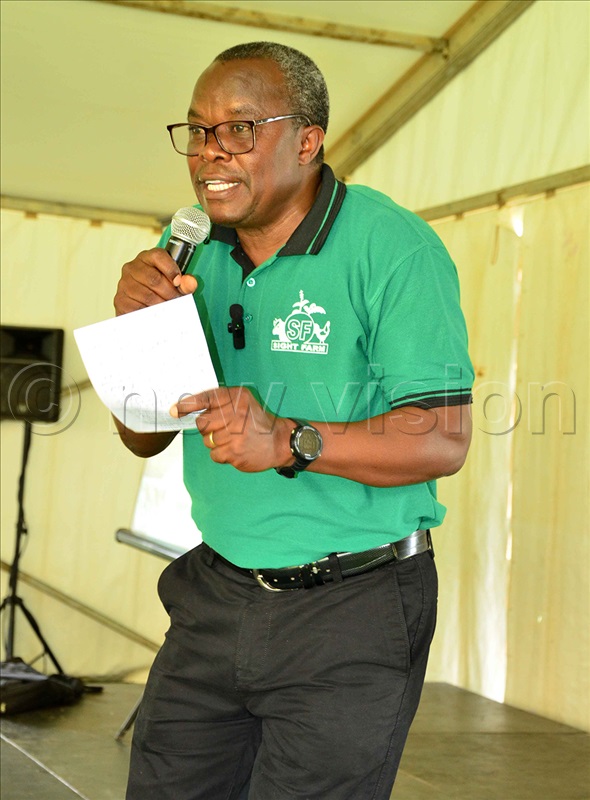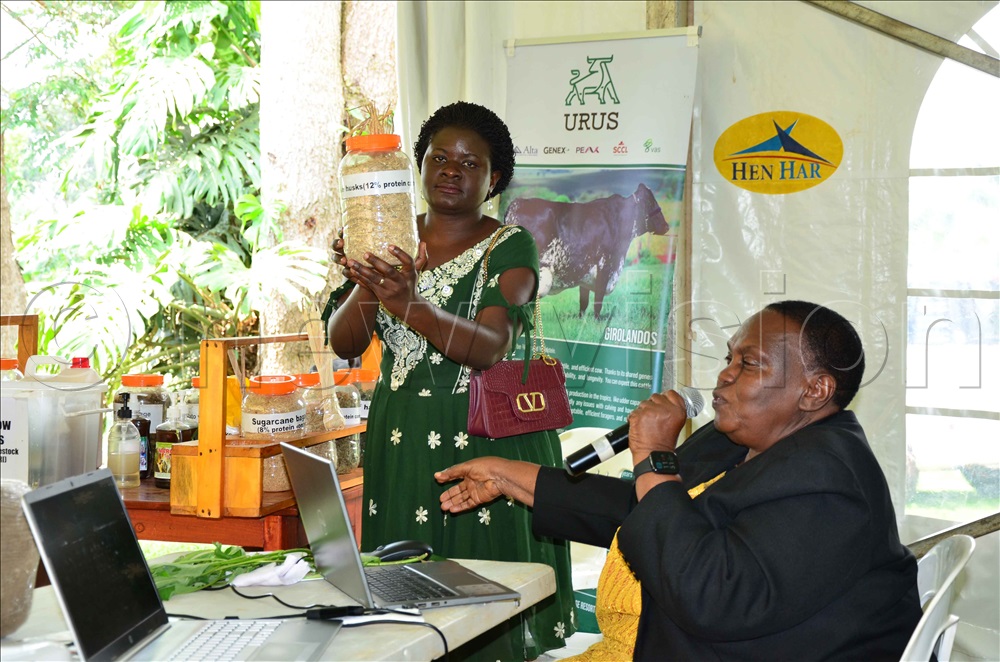By Joshua Kato
It was about the right breeds, the best innovative feeding methods but also the right mindset during the 2024 dairy master class organized by Vision Group, September 7.
The day-long session that took place at Sight Farm, Namulonge was attended by over 250 farmers from across the country.
The trainers included Henry Sight Lugolobi, Dr Jolly Kabirizi from Kyakuwa farm, Dr Moses Mwesigwa from NARO and Dr Kabanda from URUS.

Lugolobi told the farmers that the beautiful farm, with so much to see, so much to talk about in both livestock and crop husbandry started as a small idea, under the roof of their small house in Makindye, Luwafu Kizungu zone in the year 2000.
Lugoloobi had some small space of around 30×30 feet so we decided to start rearing chicken. The space took around 200 layers and two zero-grazing cows.
That was the beginning of a journey, that 20 years later has given birth to a large thriving poultry enterprise in Namulonge, near Gayaza in Wakiso district.
The farm called Sight Farm has at least 20,000 broilers and over 35 dairy cows. There are also goats, bananas, trees that give the farm a nature forestry look and pasture grasses at the farm.

“I have combined good genetics and proper feeding using grasses grown on the farm and my milk yield has tremendously gone up,” boasts Lugolobi, owner of Sight Farm.
Sight Farm started with one heifer in 2009. Located at Namulonge, Wakiso district, near the National Agriculture Research Organisation (NARO), there are over 35 well-fed cows on the farm, most of them born there.
The herd has a combination of Holstein friesians and jerseys. The cows are housed in a modern shed that has feeding and resting sections. For the resting section, Sight Farm used rice husks to create a comfortable cushion on the floor of the shed on which the animals sleep.
The feeding section is also properly spaced to ensure easy reach to the feeds and water. The calves are, however, housed in a separate shed.
The waste from the animals is collected through a network of drainage channels into a collection pit. From here, the waste is then applied to the crops and pasture fields on the farm as manure.
The cattle shed also has a milking machine which has improved milk hygiene at the farm.
He maintains a silage bunker with over 20 tonnes of hay. The cows are fed on both fresh and dried grass which boosts their milk production.
The dairy unit
The farm is still developing its dairy production system to increase its milk yields.
“At the moment, I have cows that can give as much as 30 litres,” he says.
All the cows were born at the farm, through using improved genetics.
“It took me time to develop my own line of genetics. I sourced good semen and gradually I can see the results,” he says.
While previously his highest milking cow had an average of 15 litres, he now has cows that can produce 30 litres per day. From those that are milking, he gets 300 litres per day.
“Previously I was challenged by a lack of enough feeds for my cows. However, I have since planted all types of pastures. My milk yields have improved to 25 litres for some milking cow every day,” he says.
Grasses and pastures
According to Lugolobi, to benefit from good genetics, a person has to feed them well.
Lugolobi, therefore, worked to improve feeds on the farm. He grows his own grasses and pastures on over 10 acres of the farm and processes it into feeds.
He is growing new Napier varieties like Kakamega and Super Napier pakchong.
“In addition, we have another high-value pasture – Chrolis Guyana. We also grow maize that is processed into silage,” Lugolobi says.
At the moment, there are several silage bunkers with a capacity to feed his cows for over a year. From the brachiaria, he makes hay for his cows and sale to other farmers. A 10kg bale of hay costs sh5,000.
The farmers later had a tour of the farm.
Look out for full story in Harvest Money on Friday, September 13.





